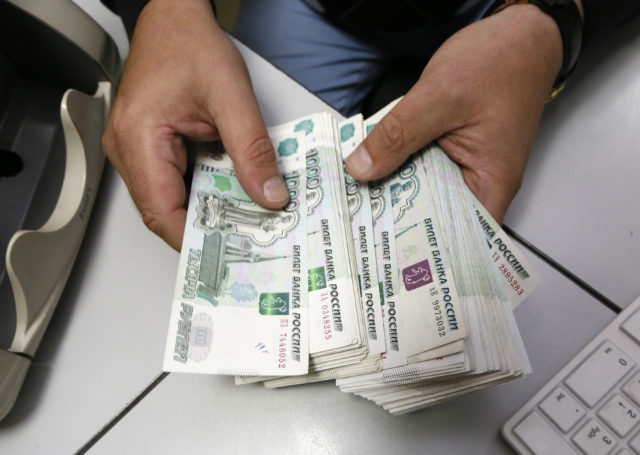
Airline Pilot Shortage Illustrates Broader Systemic Problems in Russia’s Labor Market
Publication: Eurasia Daily Monitor Volume: 14 Issue: 83
By:

Several weeks ago, during the annual St. Petersburg Economic Forum (June 1–3), Vitaly Savelyev, the director general of Russia’s flag carrier, Aeroflot, confirmed a fact that was already well known to industry insiders: experienced airline pilots are becoming a rare asset in Russia, since too many of them (and not necessarily only from Aeroflot) now move to China and other growing Asian markets in search of better-paid jobs (Regnum, June 9). The difference in the average monthly remuneration between Russian and Chinese civilian pilots is now close to a factor of two. In China, they are paid between $17,000 and $25,000, while in Russia, pilots receive only 470,000 rubles ($7,800) (Kommersant, June 9). Savelyev’s revelations immediately sparked a harsh reaction from Russian government officials. Transportation Minister Maksim Sokolov claimed that the Aeroflot director general had overstated the problem, which, in fact, barely exists (Argumenti.ru, June 10). A bit later—presumably after an exchange between high-ranking Russian and Chinese officials—an announcement was made that Chinese airlines would stop hiring Russian pilots (Shpls.org, June 16). At the same time, Aeroflot offered to pay new pilots, as well as those pilots who left the company within the past three years, 650,000 rubles ($10,800), as long as they agree to stay with the Russian airline for at least two years (Novaya Gazeta, June 13). So the incident was considered settled once and for all. Yet, the underlying issue that provoked it is still present in the broader Russian labor market.
The controversy over pilot shortages that came to light in St. Petersburg and the debate about salaries that followed reflect an important point about the Russian economy, which grew quickly between 2000 and 2008 but stalled thereafter (GDP increased by a mere 3.6 percent from 2008 to 2016). During the boom years, average monthly salaries in Russia skyrocketed from 2,220 rubles ($36.50) in 2000 to 17,300 ($286.80) in 2008 (Gks.ru, accessed June 21). And considering that, during this period, the ruble appreciated against the dollar from an average of 28.14 rubles per dollar in 2000 to 24.86 rubles per dollar in 2008 (Ruxpert.ru, November 2, 2016), the typical Russian worker would have seen an enormous jump in dollar earnings—from $78 to $696 per month in just eight years. This happened not due to intensive industrial development, like the type recorded across East Asia, but rather, thanks to the redistribution of wealth originating from oil and natural gas exports. As a result, salaries in Russia exceeded average figures in the Baltic States, Poland and Slovakia without any significant changes inside Russia’s economy. Urban dwellers became accustomed to this situation, and generated a huge demand for imported goods, which became another accelerator of Russia’s growth.
In recent years, however, the trend has reversed. First, average wages in dollar terms fell from $740 to $500 per month between July 2008 and early March 2009, then jumped to an all-time high of $952 per month in early 2013, and later plummeted to $430 per month in late January 2016 (all data calculated using the official average monthly wages from the Rosstat database and the ruble/dollar rate provided by the Central Bank of Russia). Now the government is trying to bring incomes back up, but the Russian labor market is soft, and the ruble is once again under pressure since oil prices shed more than 15 percent during the last 30 days. The majority of people in Russia are trying to economize on staples and clothing and are cutting their long-term spending. But as local businesses curtail their own investments due to the rising economic uncertainty, hope for recovery slips ever further away.
The most remarkable part of the story about the state of Russian wages is that they seem to be completely decoupled from the natural cycle of business activity. As economic history teaches us, drastic falls in labor costs can cause substantial economic growth, as happened in most countries that devalued their currencies since 1997—Russia, in 1998, included. But today there is no sign that domestic manufacturing is on an upward trend (all the exceptions can be found in agriculture or the defense industry). This is because Russia, on the one hand, does not have a developed export-oriented industrial sector, for which wage depreciation could become a life saver; and, on the other hand, no foreign investors are in sight who might be willing to capitalize on the incredibly cheap labor inside the country.
Back in 2007–2008, when personal disposable incomes were on the rise, some Russian liberal economists—first of all, then–minister of finance Alexei Kudrin—began to talk about the “middle-income trap,” which supposedly made the economy uncompetitive and therefore effectively deprived it of its previous growth dynamics (Aif.ru, May 22, 2014). These days, Russia arguably faces a completely different challenge of a “low-income trap”: depressed global oil prices are pushing peoples’ incomes down, while there is no additional demand for a devalued workforce at all. And since the lack of outside investment prevents wages from bouncing back, Russians’ real disposable incomes can, in the long run, be expected to decline even further. The falling wages, meanwhile, diminish any chances of overall domestic demand rising and for the economy to recover.
When Russian wages were higher than in the neighboring countries of Central-Eastern Europe, both the government and Russian experts were able to point to these high salaries as the reason for why overall economic growth was being held back. But now that Russia’s labor costs are even lower than in China, no explanation of this kind can be proposed any longer. So if Russia’s “full house” of favorable economic factors—abundant resources, low taxes and cheap labor—is apparently not enough to lift the country out of its chronic stagnation, it suggests the need to change something in the country’s management—in other words, the power elite.



